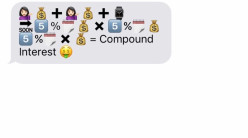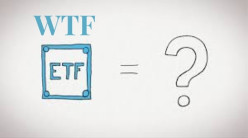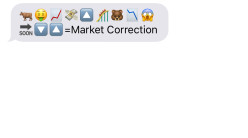Reading and understanding stocks is just as confusing and unknown as the depth of oceans. You may have been swiping on your phone looking at Apple and see all these metrics below, and just like algebra it looks like a foreign language to you. We don’t want you Orcas swimming in the deep blue without knowledge of what stocks out there maybe good or bad! We want to help guide you on the basics, so you can make better decisions as an investor.
Market Cap, Beta, P/E Ratio, Bid and Ask price, and it goes on and on like when kids are asked to make a list of things they want for Christmas. Orca, wanted to take these crucial metrics and translate them into our language, so we all can understand what these terms mean when you swipe through on your phone.
Key Metrics
•Market Cap: Think of this as the company’s size, how much of the market they command and how many outstanding shares they have [Outstanding shares x current stock price].
Why: Well, in the market, size does matter. The bigger the valuation, the less risk you will take on as an investor as they will most likely pay a dividend. Think of it as you getting paid while you patiently wait for their business flourish and expand so that their stock price increases
•Beta: Is the sensitivity factor of a stock, how much it will move when the market moves, for example - beta of ONE (1) moves in direct correlation with the market (Market = S & P 500). So a company with a beta of .90, is less volatile (interpreted as risk) by 10 % (The difference between 1 and .90), same way for a company that has a beta of 1.10 it is more volatile by 10%.
Why: It helps us see the risk factor of a stock or a bunch of investments in a portfolio.
•Dividend Yield: Indicates how much a company is paying out of its earnings to their loyal shareholders.
Why: A company that gives you dividends is often looked at being more profitable and you are literally getting paid just to own the stock. #moneyface
•P/E Ratio: current market price of a share divided by earnings per a share, so if stock is worth $10 and earned $2 a share, then its P/E=5.00
Why: This tells us, how profitable a company is, and if a stock is valued correctly or overvalued relative to the market. For example Tesla has a high P/E ratio, which means it is valued more than it is making.
•Bid and Ask Price: The bid and ask price means the buy and sell price. Bid meaning to sell, and ask meaning to buy. So when you see Bid at $50 this means that stock is selling for $50, and when you see the Ask at $55, this means that stock is being bought at $55. The Bid and Ask is great to use, because it will give you the spread price on a specific stock; which is the difference between the bid and the ask price. The greater the spread, the more volatile the stock.
Sure there are numerous other metrics to look at, like mentioned earlier, the list could go on and on. There are also earnings calls that you can be on the lookout for if interested in a certain company, to see if earnings/revenues either exceeded analysts’ expectations or not. Come join the Orca pod, and we’ll show you the ins and outs to these valuations.












